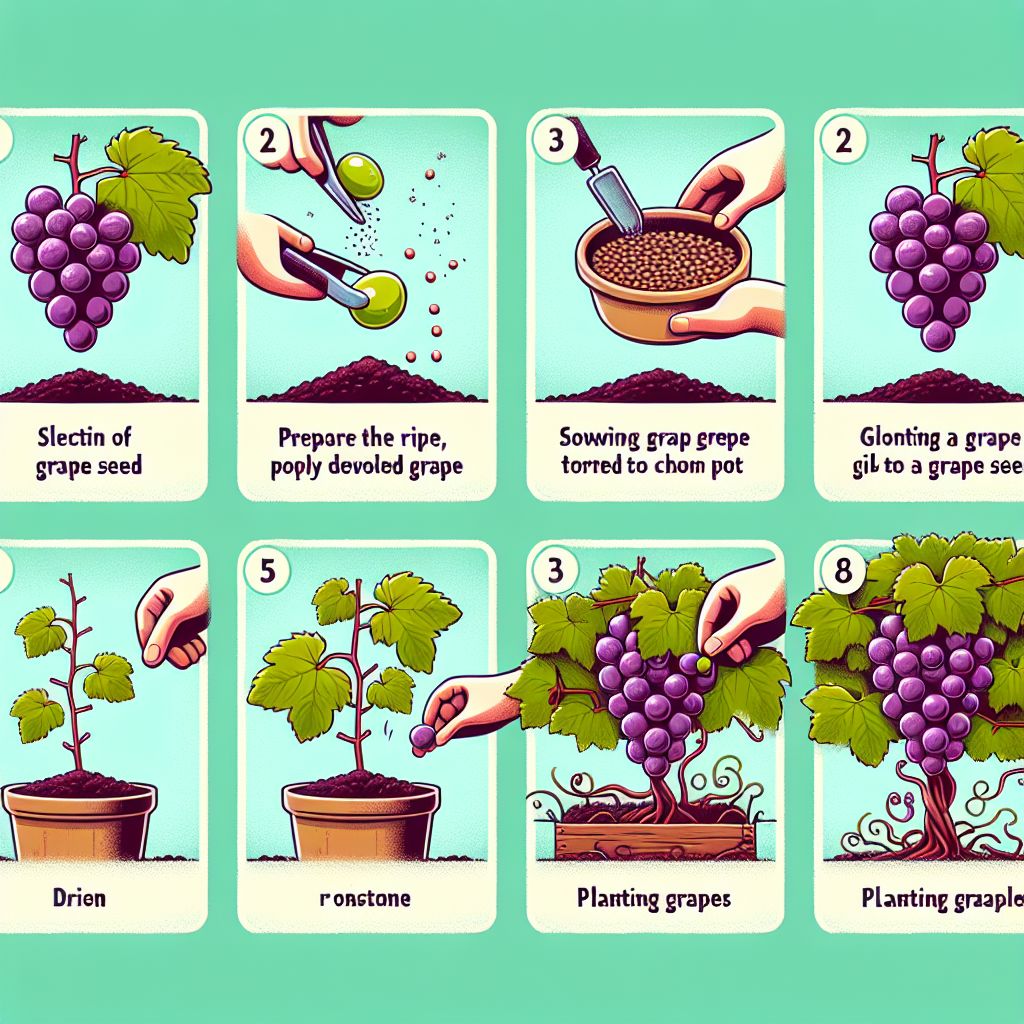
How to plant grapes from grapes
How to Plant Grapes from Grapes: A Step-by-Step Guide
Grapes are not just a delicious fruit; they are also relatively easy to grow, making them a favorite among gardeners. If you've ever wondered how to plant grapes from grapes, you’re in luck! This guide will walk you through the delicate process of propagating your grapevines, providing you with succulent fruits in your own backyard. Whether you aim to cultivate them for personal consumption, to make wine, or simply to beautify your garden, this article covers everything you need to know.
The Basics of Grape Growing
Before diving into the process of planting grapes, let’s discuss some basic information about grapevines:
- Grape Varieties: There are many varieties of grapes, including table grapes, wine grapes, and raisins. When choosing your variety, consider your climate and the intended use.
- Climate Requirements: Grapes thrive in sunny climates with moderate rainfall. They enjoy well-drained soil and perform best in USDA zones 5 to 9.
- Soil Prep: Soil should be tested for pH levels (ideally between 5.5 and 7.0) and amended with organic matter for optimal growth.
Gathering Your Materials
To successfully plant grapes from grapes, you will need the following materials:
- Healthy grapes (preferably organic)
- Scissors or pruning shears
- Small pots or trays
- Potting mix
- Watering can or spray bottle
Choosing the Right Grapes
The first step in learning how to plant grapes from grapes is selecting the right type of grapes. Ideally, you would want to use grapes that are organic and free from pesticides. Here’s what to look out for:
- Choose ripe, healthy grapes without rot or blemishes.
- Check for moisture content; juicy grapes have higher chances of successful propagation.
- If possible, select grapes from a known vine that has produced well in the past.
Propagating Grapes: The Process
Now that you have your materials and chosen the right grapes, it’s time to start propagating them. Follow these steps to successfully grow grapevines from grapes:
Step 1: Prepare the Grapes
Begin by washing the grapes thoroughly to remove any chemicals or impurities. Next, cut the grapes in half. This will allow you to access the seeds more readily.
Step 2: Extract and Prepare the Seeds
- Remove the seeds from the grape halves carefully, using a toothpick or a small spoon.
- Rinse the seeds in water to remove any residual fruit pulp.
- Soak the seeds in water for 24 hours to improve germination rates.
Step 3: Planting the Seeds
Once your seeds are prepared, it’s time to plant them. Here’s how:
- Fill your pots or trays with the potting mix, leaving about an inch from the top.
- Make small holes in the soil about half an inch deep.
- Place one seed into each hole and cover it gently with soil.
- Lightly water the seeds to keep them moist but not waterlogged.
Step 4: Provide Optimal Conditions
Grape seeds require specific conditions to germinate:
- **Light:** Place the pots in a warm, sunny location where they can receive direct sunlight for several hours a day.
- **Temperature:** Maintain a temperature of around 70°F (21°C) for best results.
- **Moisture:** Keep the soil consistently moist, using a spray bottle to avoid overwatering.
Step 5: Transplanting Seedlings
After a few weeks, you should start to see tiny seedlings emerging from the soil. Once they have grown a few inches tall and developed several leaves, they are ready to be transplanted:
- Select a suitable outdoor location that receives full sun.
- Space your new seedlings at least 6 feet apart to allow for proper growth.
- Dig holes that are twice the size of the root ball of each seedling.
- Carefully remove the seedlings from their pots, being careful not to damage the roots.
- Place them in their new holes, cover with soil, and water thoroughly.
Step 6: Provide Ongoing Care
Once your grapevines are in the ground, they will need ongoing care:
- **Watering:** Ensure that the plants receive enough water, especially during dry spells.
- **Fertilization:** Use a balanced fertilizer in early spring to promote robust growth.
- **Pruning:** Regularly prune the vines to promote air circulation and fruit production.
Common Challenges When Growing Grapes from Seeds
Like any gardening endeavor, growing grapes is not without its challenges. Here are some issues you may encounter and how to address them:
Pests and Diseases
Pests such as aphids and spider mites can harm grapevines. To manage pests, consider using organic insecticides or introducing beneficial insects like ladybugs to your garden.
Environmental Stress
Grapes are sensitive to environmental conditions. Watch for signs of stress such as wilting or yellowing leaves. Implement regular watering and ensure adequate sunlight to reduce stress.
Failure to Germinate
If your seeds do not germinate, consider the following factors:
- **Age of Seeds:** Older seeds may have lower germination rates.
- **Soil Quality:** Ensure that you’re using a quality potting mix that drains well.
- **Moisture Levels:** Ensure that the soil is kept moist but not soggy during the germination phase.
Conclusion
By following this guide, you now have a comprehensive understanding of how to plant grapes from grapes, from selecting the right fruit to nurturing your newly planted grapevines. Remember, patience is key when growing grapes, as it may take a couple of years before you see the fruits of your labor—both literally and figuratively. Enjoy the gardening journey, and happy planting!
By Guest, Published on August 6th, 2024